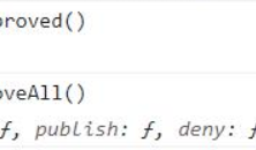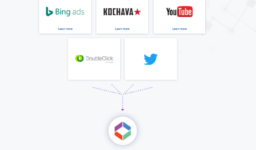Email : A referring domain is considered as an email referring domain when visitors click an emailed message link containing the protocol imap:// or mail:// and arrive at your site. For example, anything coming from https://mail.yahoo.com is not counted as an email referrer because the protocol is https://. Emails from Outlook are reported in the Typed/Bookmarked line, while any referrer with an HTTP protocol where the domain is a known search engine is reported in the Search Engine line.
When you get a email or a mobile campaign, and keep a close eye on the url window, you’ll notice the click goes to your campaign solution provider and is then redirected to your site.
That’s one example of a redirect.
That is not an issue.
Make sure they are permanent, 301, redirects. The delicious type of redirects that dutifully pass the referrer string to the landing page telling your web analytics provider where the person originally came from.
You use temporary, 302, redirects and the referrer never gets passed on. Depending on how the redirect server is configured either the click looks like it came from the redirect server or with a blank referrer (direct!).
This is particularly important for URLs that are entry points on your site, as without original referrer data, you cannot know the source of sales and conversions on your site. Anyway, on to the results.
| Redirect method | Browser | Result | Impact on analytics |
| Meta refresh – 0 | Firefox 3 | Blank referrer | Lost data |
| IE8 | Blank referrer | Lost data | |
| Opera 9 | Internal referrer | Lost data | |
| Javascript:location.href | Firefox 3 | Internal referrer | Lost data |
| IE8 | Blank referrer | Lost data | |
| Opera 9 | Internal referrer | Lost data | |
| Javascript:location.replace | Firefox 3 | Internal referrer | Lost data |
| IE8 | Blank referrer | Lost data | |
| Opera 9 | Internal referrer | Lost data | |
| Server-side 301 | Firefox 3 | Original referrer | |
| IE8 | Original referrer | ||
| Opera 9 | Original referrer | ||
| Server-side 302 | Firefox 3 | Original referrer | |
| IE8 | Original referrer | ||
| Opera 9 | Original referrer | ||
| Server-side 301 – chained | Firefox 3 | Original referrer | |
| IE8 | Original referrer | ||
| Opera 9 | Original referrer |
Conclusion
While there’s nothing too unexpected in the results, it’s clear that the only way to redirect visitors and have reliable web analytics data is to use a server-side redirect. No javascript or meta-based method works, in all cases resulting in an empty or internal referrer (which will misleadingly show up as bookmark/direct in most analytics packages). Interestingly, javascript and meta redirects can result in totally blank referrer data in some browsers.
Server-side methods worked across all major browser tested, and you can get away with chaining redirects together while still keeping the referrer data.



Leave a comment
[wpqa_login]